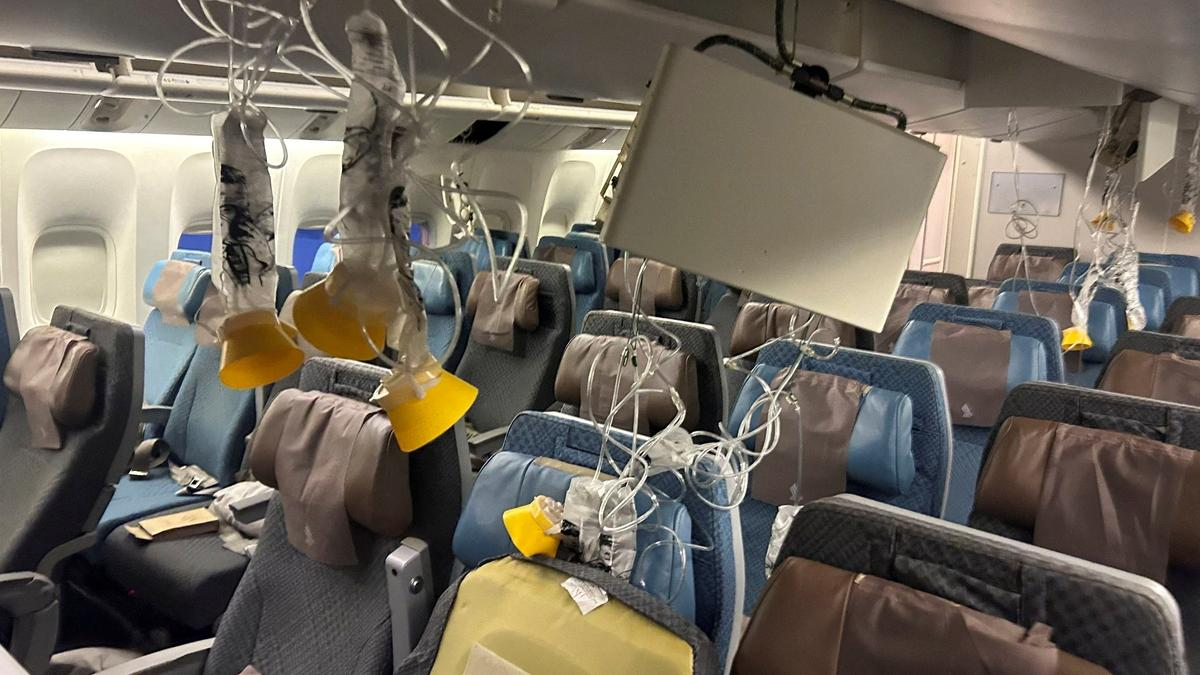Description

Copyright infringement not intended
Picture Courtesy: https://www.thehindu.com/sci-tech/science/what-is-aircraft-turbulence-and-how-common-is-it-explainer/article68201559.ece
Context: A Singapore Airlines flight from London to Singapore experienced severe turbulence on May 21, causing one passenger to die and 30 others injured, prompting the flight to divert to Bangkok.
What is Turbulence?
- Turbulence refers to irregular and chaotic air movements that occur in the Earth's atmosphere. It can happen due to sudden changes in airspeed, altitude, and direction, leading to disturbances for aircraft flying through affected areas.
Causes of Turbulence
- Weather Patterns: Turbulence is commonly associated with weather phenomena such as thunderstorms, frontal systems, and atmospheric instability. Convection currents within clouds and wind shear along weather fronts can create turbulent conditions.
- Clear Air Turbulence (CAT): CAT occurs in clear skies and is caused by variations in wind speed and direction at different altitudes. It can be particularly hazardous as it is often unexpected and difficult to detect.
- Mountainous Terrain: Winds flowing over mountain ranges can create turbulent eddies and downdrafts on the leeward side, affecting aircraft flying nearby.
- Jet Streams: High-altitude air currents known as jet streams can produce turbulence, especially when encountered by aircraft flying at lower altitudes.
Types of Turbulence
- Convective Turbulence: Generated by convective currents within cumuliform clouds, convective turbulence is commonly associated with thunderstorms and can be severe and localized.
- Mechanical Turbulence: Mechanical turbulence occurs near the Earth's surface due to obstructions such as buildings, mountains, and terrain irregularities. It can affect aircraft during takeoff and landing.
- Wake Turbulence: Generated by the vortices produced by larger aircraft, wake turbulence poses a hazard to smaller aircraft flying in their vicinity, particularly during takeoff and landing.

Effects of Turbulence
- Aircraft Buffeting: Turbulence can cause the aircraft to experience sudden changes in altitude and attitude, resulting in buffeting and vibrations felt by passengers and crew.
- Discomfort and Anxiety: Moderate to severe turbulence can induce discomfort and anxiety among passengers, leading to heightened stress levels during flight.
- Injury Risk: While rare, turbulence-related injuries can occur, particularly if passengers are not securely fastened in their seats or if loose objects are not stowed properly.
Conclusion
- Aircraft turbulence is a complex phenomenon influenced by various factors, including weather patterns, terrain, and atmospheric conditions. While turbulence-related incidents are relatively common, rigorous safety measures, pilot training, and technological advancements contribute to ensuring the safety and comfort of air travel.
Source:
The Hindu
|
PRACTICE QUESTION
Q. A commercial aircraft flying from Delhi to Chennai encounters sudden turbulence while cruising at an altitude of 35,000 feet. The pilot suspects wind shear. What atmospheric conditions could be most likely causing this turbulence?
A) Strong headwind at cruising altitude
B) A temperature inversion causing stable air
C) Convergence zone with rising air
D) Strong vertical wind shear with a change in wind direction
Answer: D
|














